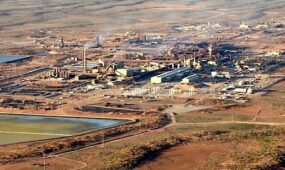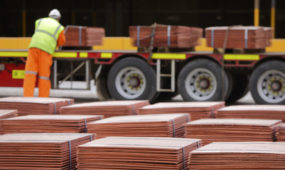Harnessing bacteria to turn gold grains into nuggets
Mining & Resources
A BACTERIA that re-concentrates gold grains into nuggets is being targeted by researchers for its potential to optimise gold extraction processes from ore, old tailings or recycled electronics.

Sign up to receive notifications about new stories in this category.
Thank you for subscribing to story notifications.
University of Adelaide researchers in South Australia have been investigating the role of microorganisms in gold transformation – a process known as the biogeochemical cycle of gold – for more than a decade.
Their latest research, published in the journal Chemical Geology, has shown for the first time, just how long this biogeochemical cycle takes and they hope to make to it even faster in the future.
“In the natural environment, primary gold makes its way into soils, sediments and waterways through biogeochemical weathering and eventually ends up in the ocean. On the way bacteria can dissolve and re-concentrate gold – this process removes most of the silver and forms gold nuggets,” said Dr Frank Reith, Australian Research Council Future Fellow in the University of Adelaide’s School of Biological Sciences.
“We’ve known that this process takes place, but for the first time we’ve been able to show that this transformation takes place in just years to decades – that’s a blink of an eye in terms of geological time.
“These results have surprised us, and lead the way for many interesting applications such as optimising the processes for gold extraction from ore and re-processing old tailings or recycled electronics, which isn’t currently economically viable.”
Dr Reith last year led a research project that discovered the role played by bacteria in the formation of platinum in surface environments.
In the latest research, Dr Reith worked with postdoctoral researcher Dr Jeremiah Shuster, John and Johno Parsons (Prophet Gold Mine, Queensland), Professor Gordon Southam (University of Queensland) and Dr Geert Cornelis (formerly of the CSIRO) to analyse numerous gold grains collected from West Coast Creek using high-resolution electron-microscopy.
They showed that five “episodes” of gold biogeochemical cycling had occurred on each gold grain. Each episode was estimated to take between 3.5 and 11.7 years – a total of under 18 to almost 60 years to form the secondary gold.
Dr Shuster, from the University of Adelaide, said understanding the gold biogeochemical cycle could also help gold exploration by finding undiscovered deposits or developing innovative processing techniques,
“If we can make this process faster, then the potential for re-processing tailings and improving ore-processing would be game-changing,” he said.
“Initial attempts to speed up these reactions are looking promising.”
The researchers said that the new understanding of the gold biogeochemical process and transformation could also help verify the authenticity of archaeological gold artefacts and distinguish them from fraudulent copies.
South Australia’s capital Adelaide has three long-standing public universities, Flinders University, University of South Australia and the University of Adelaide, each of which are consistently rated highly in the international higher education rankings.
Jump to next article



